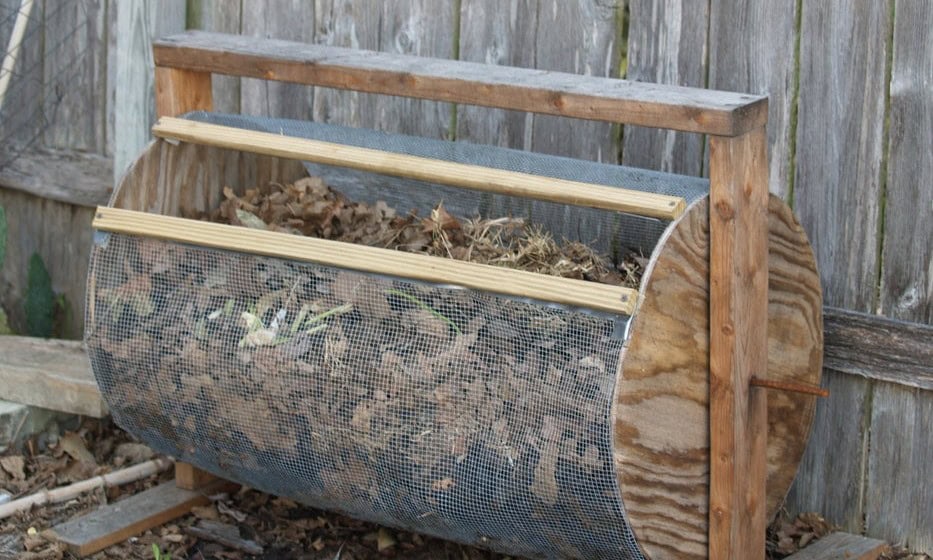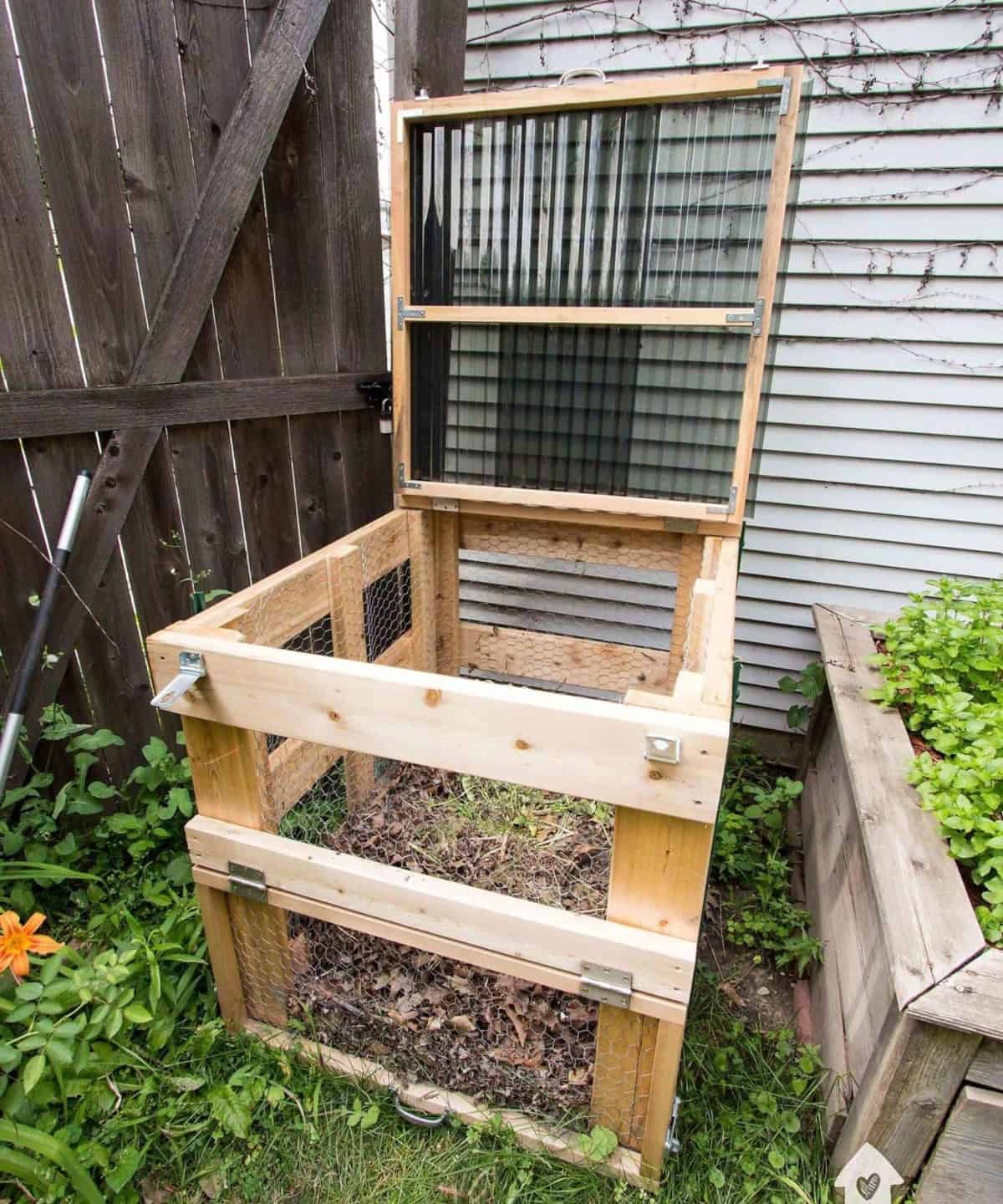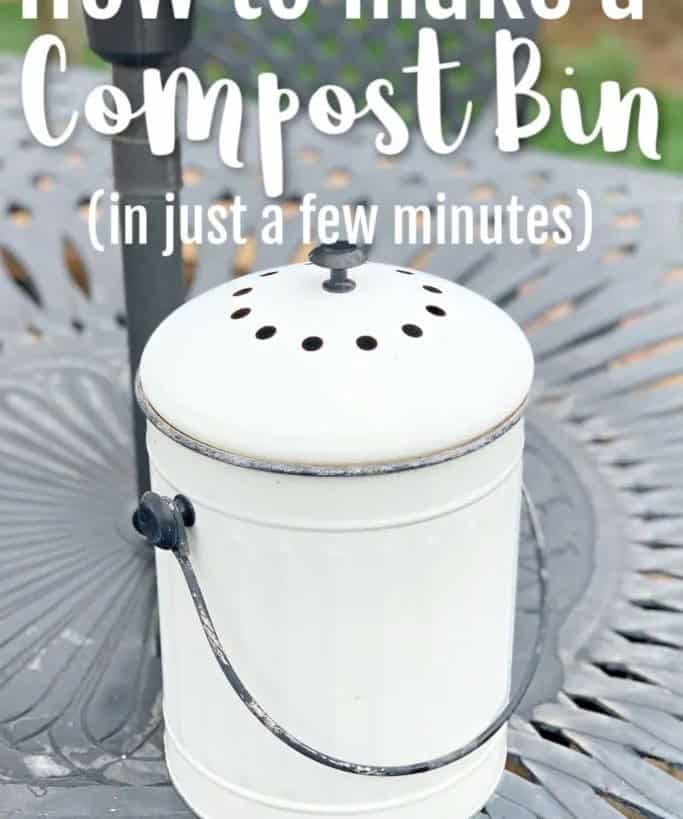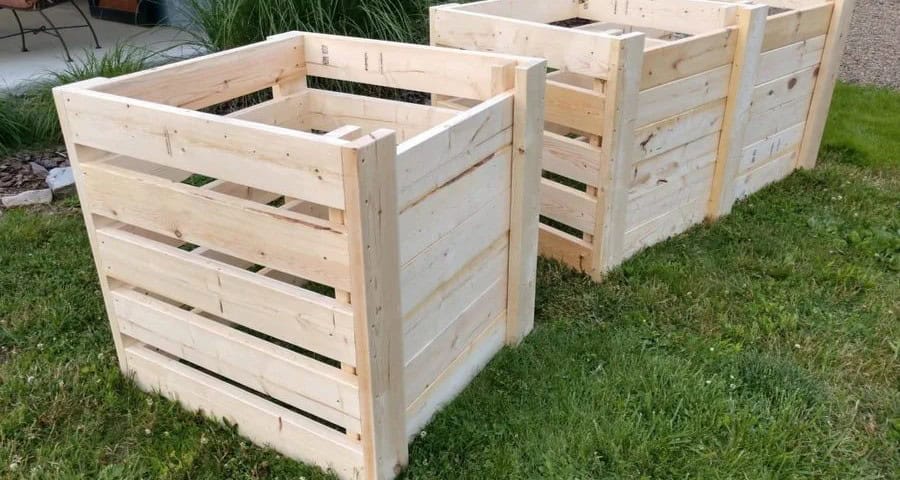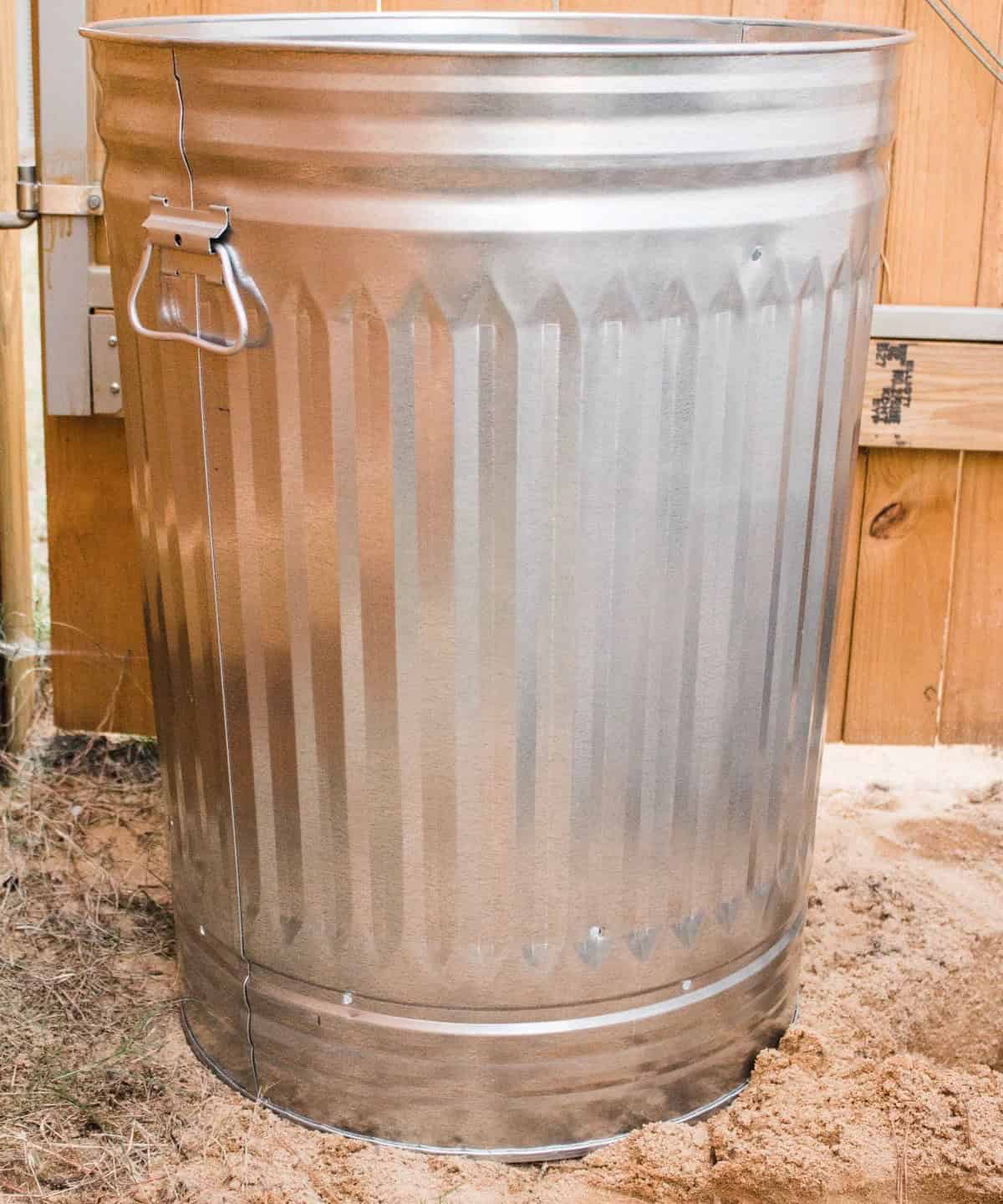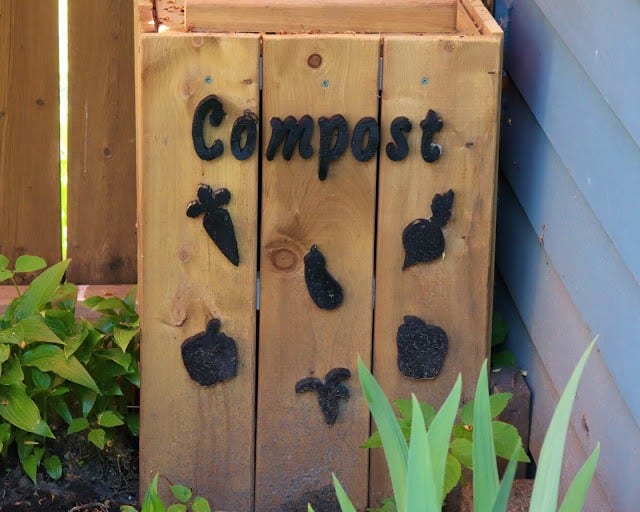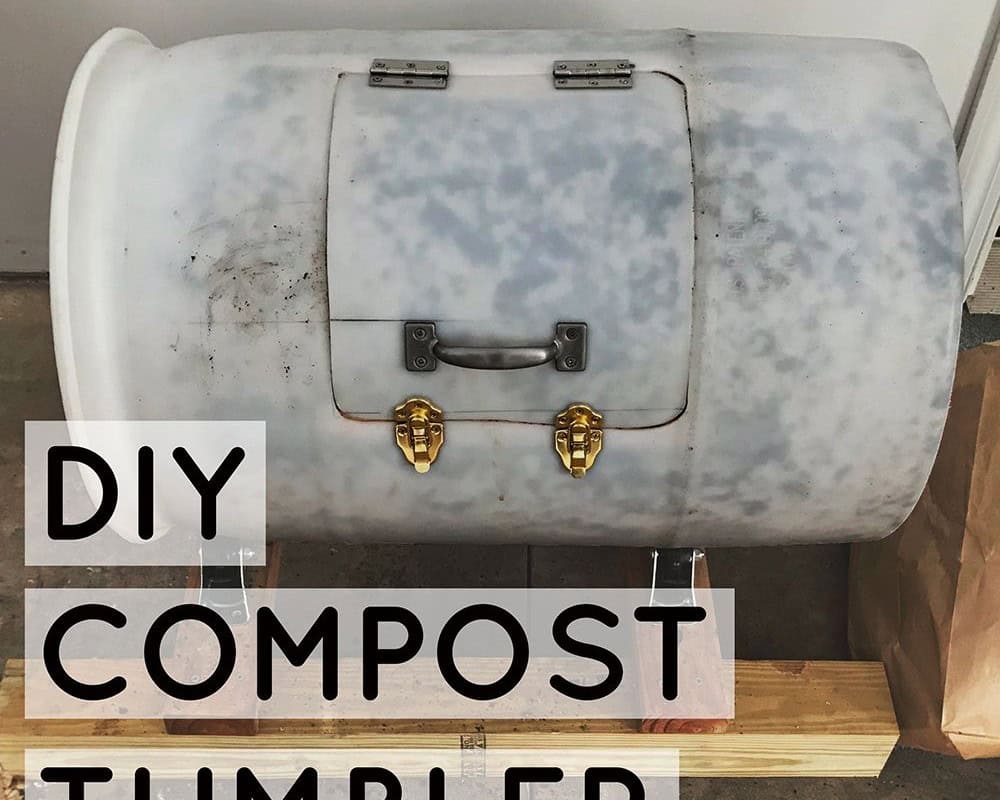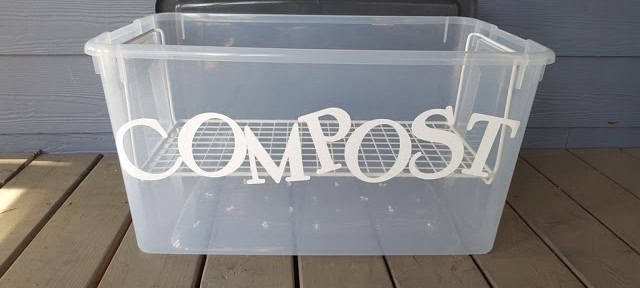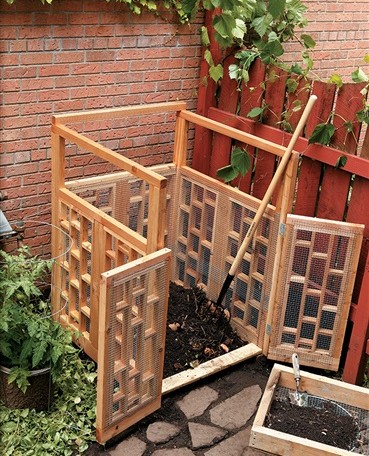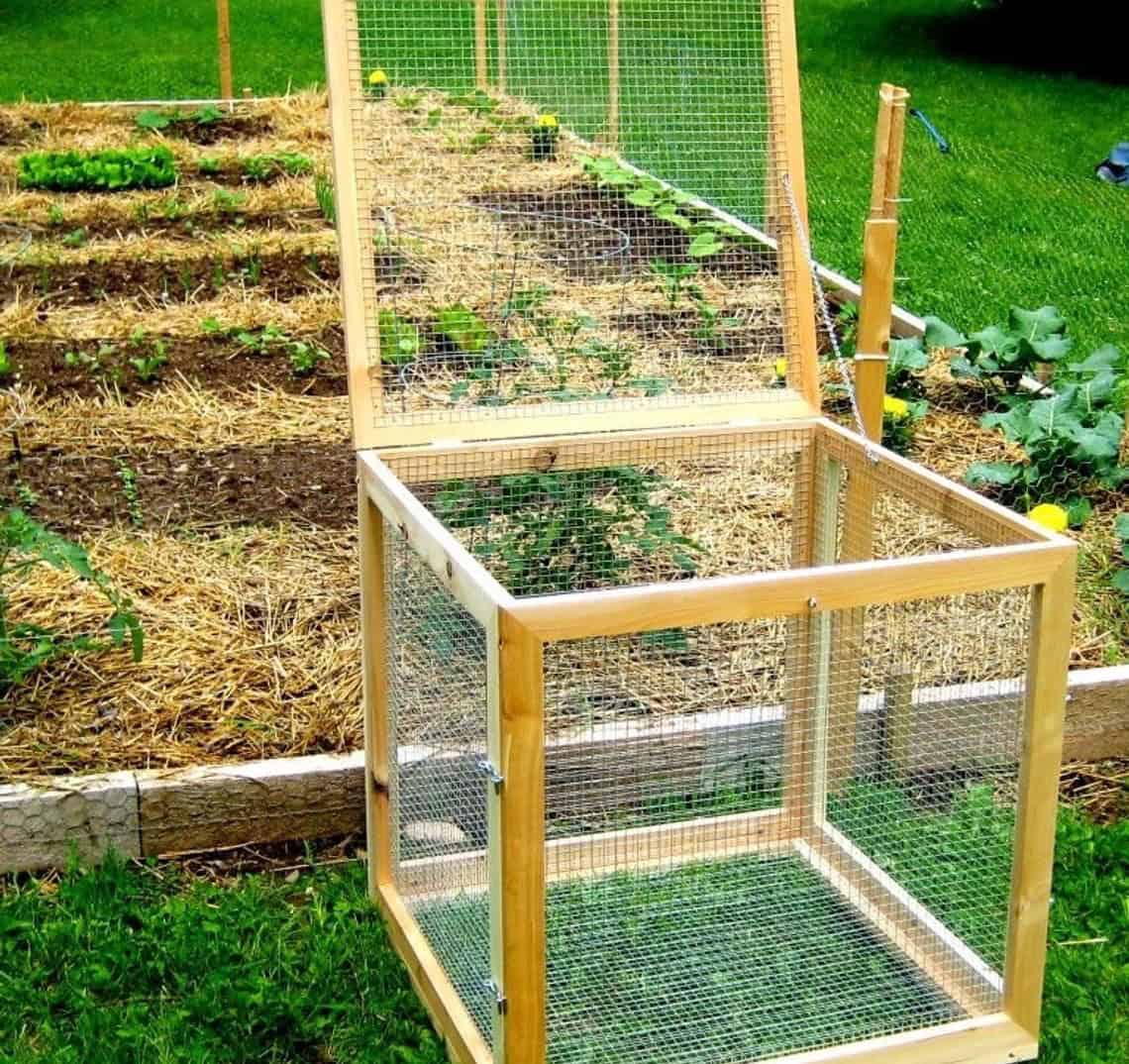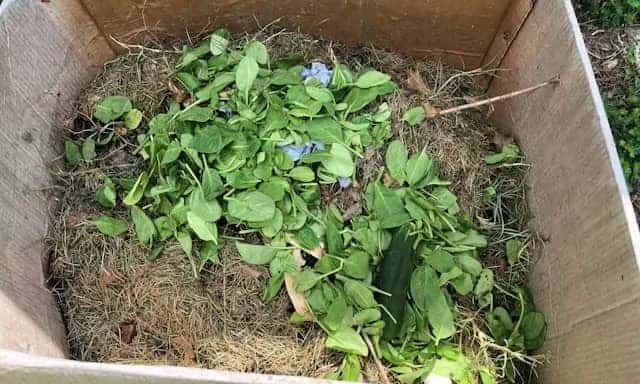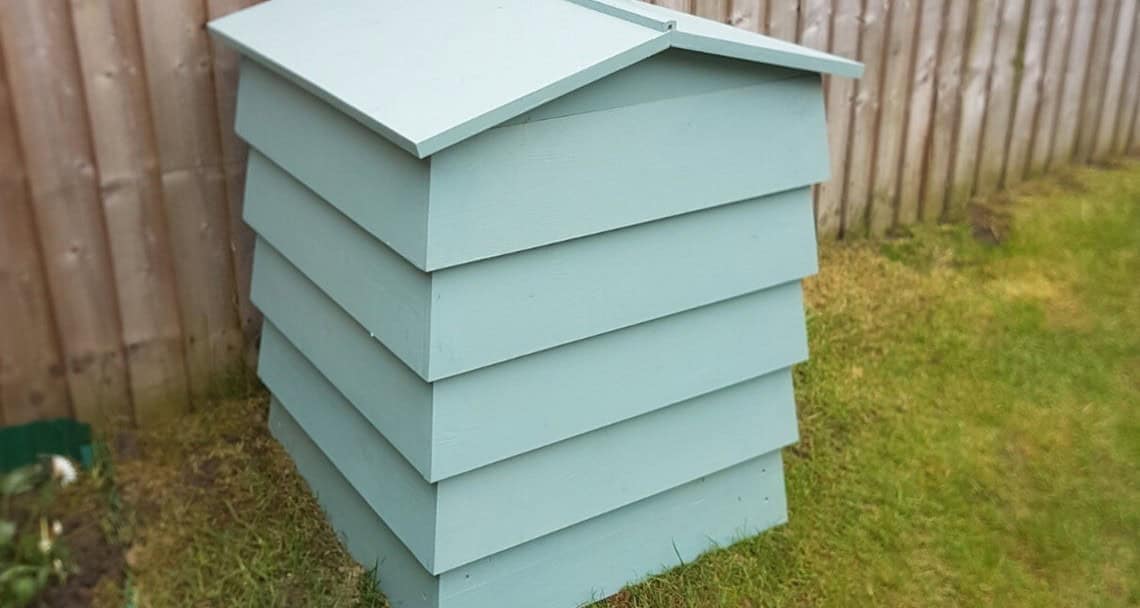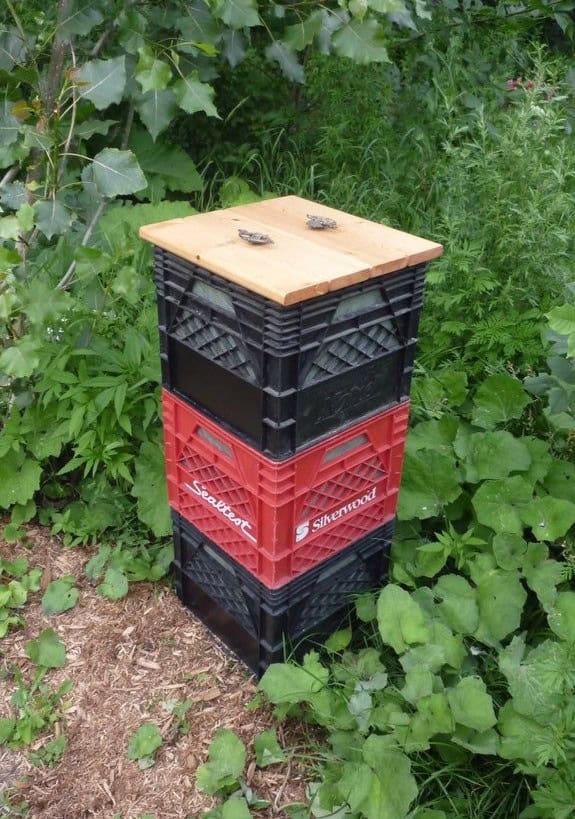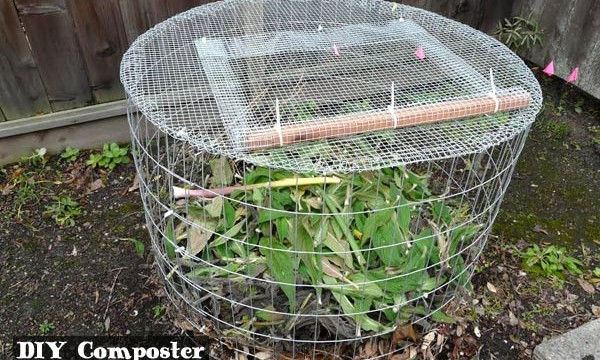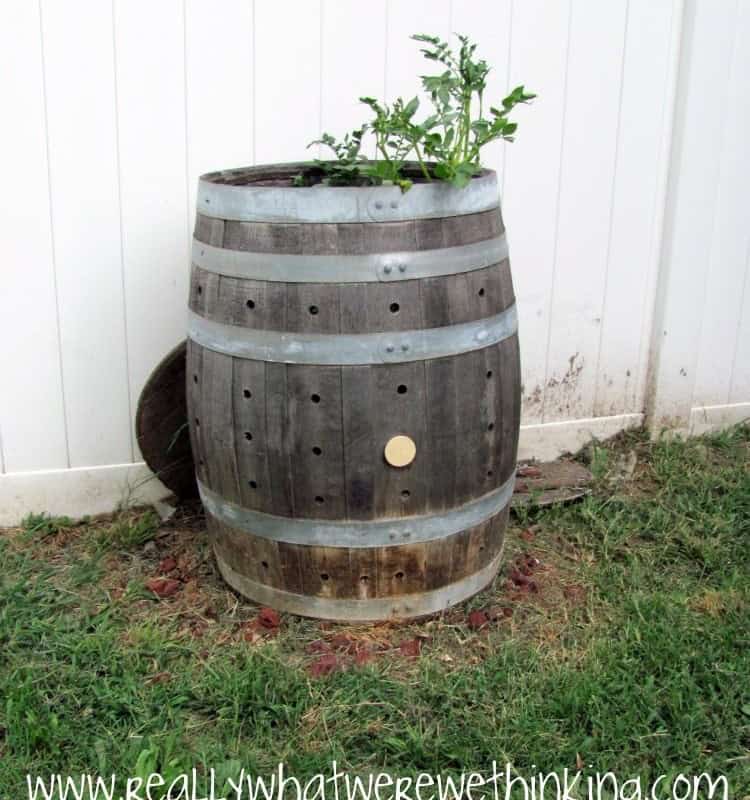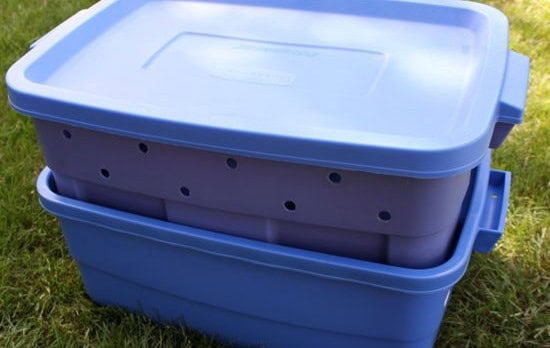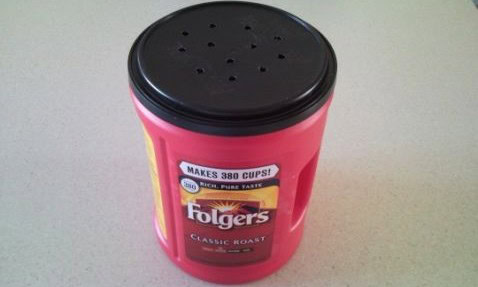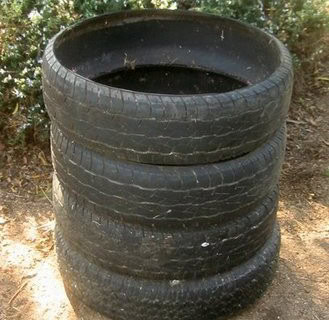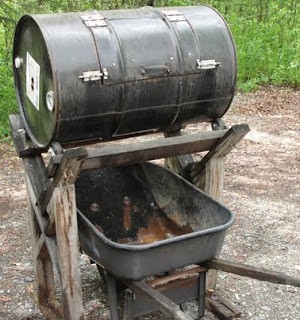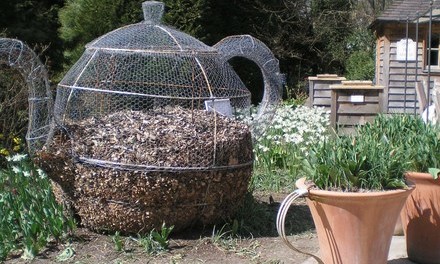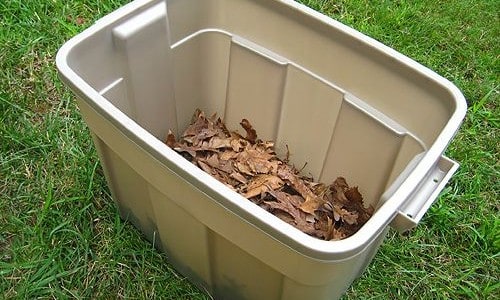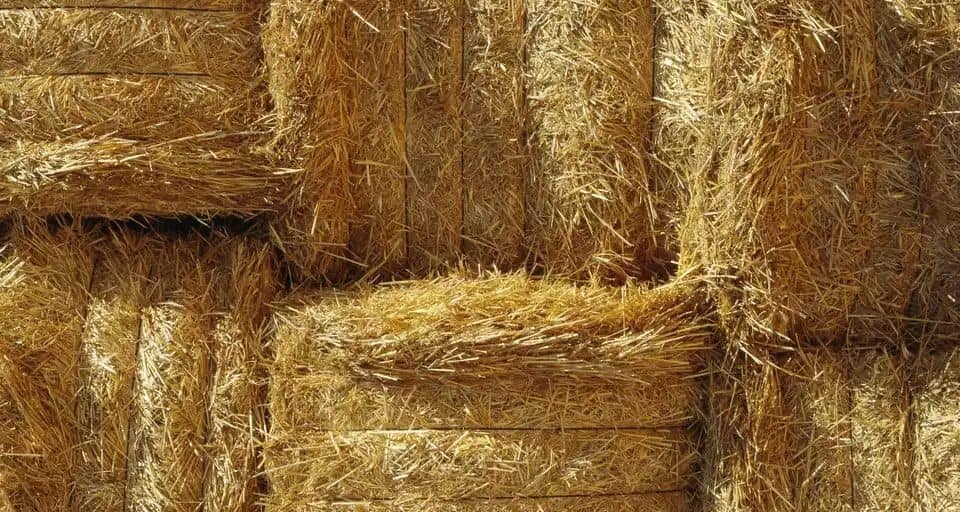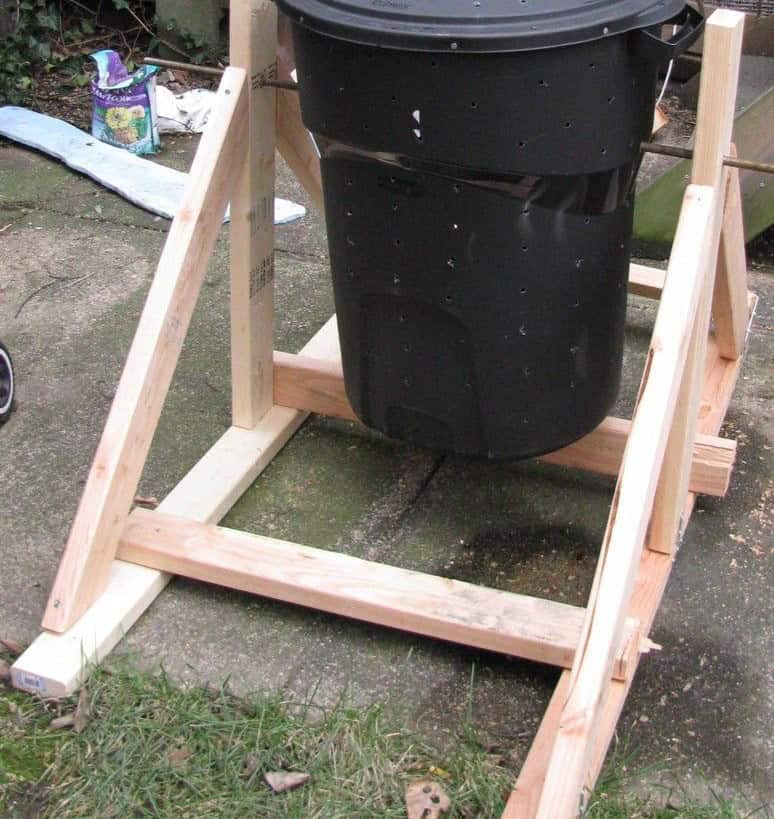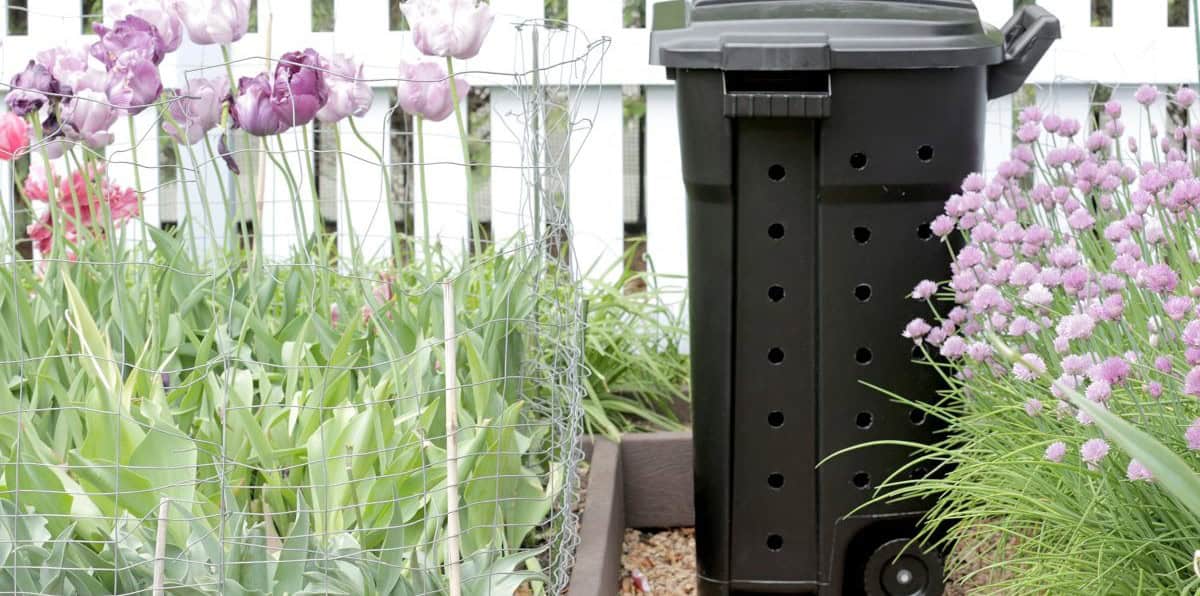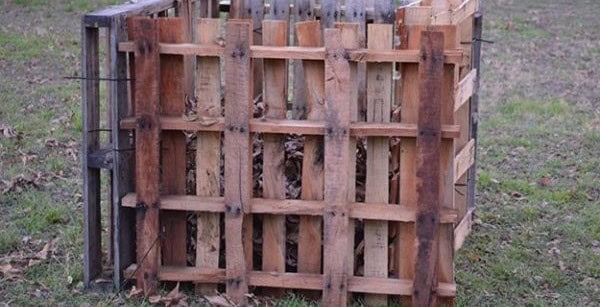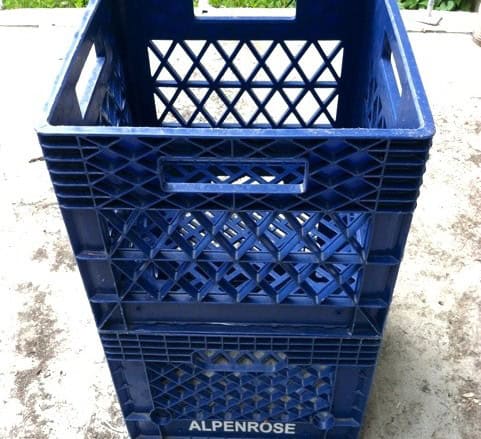Elevate your gardening game by creating your own compost bin, the key to unlocking a treasure trove of rich, organic nutrients for your backyard garden. Composting doesn’t have to be a chore – it can be a fun and rewarding experience that not only reduces waste but also yields a valuable resource for your plants. By transforming kitchen scraps and yard trimmings into nutrient-rich compost, you’ll be rewarded with healthy soil, thriving plants, and a reduced environmental footprint.
To get started, here are 37 easy DIY compost bin ideas to inspire your composting journey.
Simple DIY Compost Bin
For the serious gardener, a compost bin is an essential tool. However, creating one from scratch can be a time-consuming process. A simpler approach can still yield great results and bring a sense of accomplishment. In fact, with just under 6 hours of dedicated effort, you can construct your own DIY compost bin that’s both well-ventilated and secure. The addition of a sturdy lid hatch adds to its practicality and ease of use.
To get started, all you need is a reliable drill kit – and we’ve got you covered.
DIY Compost Bin In 15 Minutes
While some might dismiss the claim of setting up a compost bin in 15 minutes as an exaggeration, I’m willing to take the risk for a clean and efficient system. To get started, you’ll need a compost keeper. Next, utilize your power drill to create 12-15 holes at the bottom of the compost bin, ensuring proper drainage is facilitated. The final step involves layering the bin with organic materials like leaves, grass, weeds, cardboard, newspaper, and even dryer lint if available.
As the guiding principle, consider whether the material originates from the earth – if it does, it’s likely suitable for your compost bin.
Inexpensive Compost Bin
When selecting a compost bin, gardeners often prioritize affordability and aesthetics. The ideal bin should strike a balance between these two factors. This particular model excels at achieving this equilibrium. Its spacious interior allows for ample material storage, while its compact design enables effective heat and moisture retention – essential components of the decomposition process. To assemble it, you’ll need lumber and wood screws to secure the structure.
Compost Tumbler Bin
To begin building your DIY compost bin, acquire a plastic drum designed for holding large volumes. This will serve as an ideal container for composting. Once you have the drum, let’s focus on crafting the tumbler’s hatch door. This opening will allow you to easily add or remove materials from your compost pile. To create the hatch door, simply cut an access point into the side of the drum and attach hinges to secure it in place.
Upon completion, you’ll be left with a functional latch door, ready for layering compost. Alternatively, consider repurposing storage bins with sturdy handles, as found at [insert URL], to achieve similar results.
Compost Container
For a DIY worm composting bin, start by relocating your trash can to a suitable outdoor location. If that’s not feasible, grab an alternative container. Next, drill rows of holes into the top and bottom sections of the trash can. The top holes will facilitate airflow, while the bottom ones will allow worms and other microorganisms to enter. This dual approach will accelerate the decomposition process.
Once you’ve prepared the bin, dig a hole in the designated spot that’s large enough to accommodate the bottom portion of the container. Place it snugly within the hole before covering it halfway up.
No-Work Composting
To get started with this DIY project, you’ll need a reliable trash can – but this time, opt for a plastic garbage can over a galvanized one. Additionally, gather an appropriately-sized drill bit and a bungee cord from the specified source. Next, use the drill to create some holes in the lid to ensure proper air circulation. With that done, it’s simply a matter of selecting your organic compost materials before you’re ready to roll.
Wooden Crate Compost Bin
While a simple compost bin is all that’s needed, building one still requires a few essential supplies. These include fence boards for the outer structure, 2-by-2 planks to create an inner frame, and heavy-duty gorilla wood glue to hold everything together. Additionally, you’ll need to get creative and ‘requisition’ some wooden alphabet blocks from your little ones – after all, what’s a compost bin without a clever sign to remind you of its purpose?
Back To The Basics Of Tumbler Compost Bins
For this DIY project, you can utilize a plastic drum, which can be easily sourced or repurposed from an old mixing barrel. Alternatively, if you have drums lying around that are currently being used for storage purposes, those can also work well. Prior to use, it’s crucial to properly prepare and clean the drum, regardless of its origin. When selecting a detergent, opt for one that is chemical-free and won’t disrupt the compost pit’s natural pH balance.
Compost Bin For Kitchen Scraps
When it comes to disposing of kitchen scraps, compost bins are an effective solution. Throwing them out the window or down the drain is not a viable option, as they can cause environmental harm. Instead, consider repurposing your kitchen waste into a valuable resource. With some simple materials and a few weeks’ time, you can create a functional compost bin. To build this bin, start by gathering chicken wire – a readily available material that can be sourced [here](insert link).
Additionally, grab some wooden posts to serve as the frame for your compost bin, allowing it to take shape.
Compost Bin For Kids
Composting can be an exciting activity that’s perfect for involving your little ones. Simply set up a compost bin and have the whole family contribute by collecting leaves, twigs, and any organic scraps they might find around the house – like forgotten lunchtime treats. Start with a sturdy storage tote or even a recycling bin to get started. And while you’re at it, why not try some fun summer crafts to keep your kids busy?
From simple collages to intricate sculptures, there are countless ways to encourage creativity and have them excited about the process.
Wood Frame Compost Pile
When constructing a composting bin from the ground up, you’re afforded the flexibility to tailor it to your unique requirements. You can design it to suit your specific needs by adjusting its size, complexity, or even aesthetics. One popular approach is incorporating a grid panel system, which allows for easy customization and modification. Additionally, consider installing a door frame to facilitate effortless access and management of the composting process.
Once you’ve completed the frame construction, consider lining the interior with galvanized hardware cloth, readily available from various online sources.
Ready To Assemble Wooden Compost Bin
Complementing the emphasis on efficient waste management through kitchen scrap composting, it’s no surprise that pre-assembled compost bin kits are gaining popularity. This particular kit boasts an Eastern White Cedar frame, paired with a durable metal cloth interior for optimal performance. Notably, the design features a hinged top for effortless loading, as well as a removable front panel to simplify the compost turning and removal process.
By streamlining the construction process, these kits effectively eliminate the uncertainty involved in building a compost bin from scratch.
3 Bin Compost System
Composting is often perceived as a daunting task, but what if I told you there’s a simpler approach? Enter the three-part compost system, where the magic happens in a series of easy-to-follow steps. The first two compartments serve as collection points for your organic waste – think kitchen scraps, leaves, and twigs. Simply transfer these materials into the third and final bin, where they’ll undergo decomposition with a little TLC.
The key here is routine – regularly turn over the contents to facilitate the process, and voila! You’ll be enjoying nutrient-rich compost in no time.
Stone Block Compost Bin
In a surprising twist, the latest addition to my garden has sparked a flurry of questions from curious onlookers. Is it an ancient fortification? A cleverly disguised trench? The truth is far more practical – it’s a stone compost bin, and I’m thrilled with its performance.
This stonework masterpiece has become a permanent fixture in my garden, blending seamlessly into the surrounding landscape.
By combining stone blocks, mortar, gravel, and a few basic tools, you can create your own efficient composting solution.
Before you start building, don’t forget to prioritize safety – a pair of goggles and a dust mask will keep your face protected from any debris or dust that may arise during construction.
Cardboard Box Compost Bin
For those just starting out with composting, investing in a dedicated bin or building one from scratch might seem like too much of an upfront commitment. A humble cardboard box, however, can serve as a makeshift starter bin. Not only are these boxes biodegradable, but they’ll also gradually decompose over time, giving you the chance to experiment and determine whether composting is right for you.
Once you’ve gained some experience, you can transfer your ‘box’ contents into a proper compost bin and let the process unfold naturally.
Beehive Style Compost Bin
A beehive-inspired compost bin design offers several benefits. For instance, its sturdy walls and compact structure, reminiscent of a traditional beehive, provide a secure and organized space for decomposition to occur. The inner chamber also allows for easy turning of the compost when it’s time to aerate the mixture. Furthermore, this type of structure is visually appealing and can be built or sourced from here.
DIY Trash Can Turned Compost Bin
With minimal effort and just over 15 minutes of your time, you can transform an ordinary trash can into a functional compost bin. To get started, gather the necessary tools: a trash can with a lid and a power drill. The first step is to drill holes in the lid, bottom, and sides of the bin, allowing for airflow and drainage.
Stackable Milk Crate Compost Bins
You might already be familiar with stackable storage bins, but did you know that milk crates can serve a similar purpose? To create a functional storage solution using these crates, you’ll need to add a mesh screen or metal hardware cloth lining inside each one. This will help keep your items organized and prevent them from falling through the gaps. Additionally, consider taking your creativity to the next level by crafting a wooden lid for each crate, complete with a practical pull handle.
This will not only enhance the overall aesthetic of your storage setup but also make it easier to access the contents within.
Compost Pit For Yard Waste
Composting is an excellent way to repurpose household waste and create a nutrient-rich fertilizer for your garden. A significant portion of kitchen scraps can be diverted into a compost bin, while your backyard offers another abundant source of organic materials. Within a few weeks, you can collect sufficient yard waste to add to your compost pile, making it an engaging activity for the whole family.
Gather the kids and transform this task into a fun adventure by scouring the yard for twigs, leaves, flowers, and even earthworms (don’t worry, they’re harmless!). To facilitate the process, you’ll need a welded wire utility fence. Additionally, if you have leftover leaves, consider repurposing them into a beautiful DIY leaf candle holder.
Lazy Composting
While traditional composting methods may require a specific bin system, it’s possible to create a simple yet effective composting setup using just your yard’s natural terrain. In the past, before commercial compost bins became popular, many households relied on the humble compost pile – a hole in the ground that efficiently broke down organic matter.
This approach is still viable today, as long as you’re mindful of any pets or wildlife that might disturb the pile.
To get started, simply grab a shovel and begin excavating a pit in your yard.
Worm Compost Bin
While I may not be fond of creepy crawlies or fat worms, I acknowledge their importance in decomposition processes. For those who share my sentiments but still want to participate in vermicomposting, setting up a DIY bin is a great starting point. You likely already have storage containers and a stash of newspapers on hand. The more challenging aspect is acquiring the worms themselves.
Rather than waiting for them to wander into your bin, you can either get creative with digging or visit a local garden supply store to purchase some worms.
Compost Bucket- Easy and Frugal
Kitchen composting doesn’t have to be complicated or expensive. In fact, you likely already have most of the necessary tools on hand. To get started, grab a simple bucket with a lid – something like a plastic storage container or even an old coffee can will do the trick.
If you’re looking for an ultra-low-fuss approach, you could repurpose something you already use in your kitchen. As long as it has a lid, you’re good to go!
Just be sure to add a charcoal filter to keep any unwanted odors or pests at bay. With these two simple components, you’ll be well on your way to turning food scraps into nutrient-rich compost.
Used Tire Compost Bin
Are you guilty of having unused spare tires collecting dust? If so, you’re not alone! It’s easy to get started on repurposing these tires into something useful. First, gather a few sharp tools, such as knives or an electric saw, and begin cutting the sidewalls into smaller pieces. Once you’ve got your tires cut up, simply stack them on top of each other, creating a sturdy foundation for your compost pile.
As you start adding your organic materials to the mix, you’ll be amazed at how quickly they break down. With this simple method, you can turn your old tires into a valuable resource for your garden.
Basket Weave Compost Pit
The compost pile before me is a veritable work of art, its basket-weave frame expertly crafted to blend seamlessly into its surroundings. The generous size of this pile allows for effortless layering and piling on of additional materials. A notable feature of this design is the curved frame, which strikes a perfect balance between allowing air to circulate freely while also permitting heat and moisture to percolate through.
Before you start turning the compost, however, be sure to grab a rake first – simply prop it against the bin until you’re ready to get started.
Compost Tumbler In A Cradle DIY
To create an efficient compost tumbler, it’s crucial to design a cradle system that facilitates effortless turning. After constructing your barrel/tumbler and attaching its hinge door, you can proceed with building the cradle. This involves adding rollers on either side of the cradle to simplify the turning process. Once complete, give your compost bin a sleek makeover by painting it black using a can of spray paint.
The reasoning behind this dark color choice is straightforward – it enhances heat retention within the composter. By trapping heat inside, you’ll foster an ideal environment for microorganisms to break down organic matter efficiently.
Pot Calling The Kettle A Compost Bin
You can take a conventional approach and purchase an industrial-style compost bin, or unleash your creativity and craft a unique, teapot-shaped receptacle. The latter requires some basic setup, but once the foundation is laid, the sculpting process becomes relatively straightforward. Start by constructing a rough, curved base frame. With this in place, you can then use mesh or pliable metal cloth to shape the lid, spout, and handle of your teapot compost bin.
And why not add a touch of whimsy to your compost pile by tossing in some tea leaves? It’s a poetic touch that will make the composting process even more enjoyable.
DIY Compost Bin
To create a simple and effective DIY compost bin, begin by ensuring that your existing bin is thoroughly cleaned and has holes drilled into its top, bottom, and sides. With this preparation complete, you can start building the layers of your compost pile. Start by adding a base layer made up of shredded newspapers and dry leaves, taking care to fill it only about one-quarter of the way. Next, add soil until the bin is half-full.
From there, introduce your food scraps, eggshells, and any lint you may have on hand. Once all these components are in place, give the mixture a good stirring, followed by a light misting with warm water to get the decomposition process underway.
Straw Bale Compost Bin
When considering ways to enhance your compost pit, incorporating straw might not be the first thing that comes to mind. However, straw’s biodegradable nature and ability to retain moisture and heat make it an excellent addition. In fact, using bales of straw to create a compact structure for your compost bin is a great idea.
As the straw breaks down, you can simply incorporate it into the compost, creating a win-win situation where the straw serves as both a component of the pit’s infrastructure and a valuable resource in its own right.
Garbage Drum Composter
When considering the disposal of kitchen scraps, the humble trash bin may not be the first place that comes to mind. Nevertheless, turning these organic waste materials into nutrient-rich compost is a valuable endeavor. To facilitate this process, consider employing a simple yet effective contraption: a suspended compost bin. This clever setup involves attaching the bin to a long metal rod, which in turn is secured to a wooden frame.
The resulting effect is a bin that’s elevated a few inches above the ground, allowing for effortless 360-degree rotation via the metal rod. As you swing the bin, the compost inside benefits from aeration and circulation, much like a baby would in a traditional cradle – albeit with far more beneficial consequences!
Super Easy DIY Compost Bin
Your average garbage composter is enhanced by the addition of wheels, making it more convenient to move around. You can seamlessly integrate it into a corner of your yard, allowing it to quietly go about its business without overwhelming you with unpleasant odors. Simply let it sit and allow the rich blend of organic compost within to do its thing.
Multiple Bin Compost System
For large-scale gardening endeavors, implementing a multi-bin composting system is often the most effective approach. This setup enables gardeners to produce a significant volume of high-quality compost in a relatively short period. By adopting this DIY project, individuals can create a design that prioritizes quantity, quality, and speedy compost production, making it an ideal solution for those with larger gardens or seeking to scale up their composting efforts.
Pallet Project Compost Bin
If you’re looking to tidy up your outdoor space, but lack a dedicated compost bin, don’t worry – you might already have the necessary components at home. If you’ve got wooden pallets from previous projects and some sturdy zip ties, you can easily create a DIY compost bin. Additionally, if you have kids who are eager to get involved in yard work, they can help with collecting pebbles and rocks while they’re out cleaning up.
Once the task is complete, reward their efforts with a fun craft session where you can all make a unique DIY rock photo holder together.
Milk Crate Composter
To start this compost bin project, you’ll only need milk crates that are readily available at your disposal. Begin by lining the bottom of each crate with a sturdy brown paper or several layers of newspapers to provide a solid foundation. Next, add weed block fabric along the sides of the crate and secure it in place using hot glue.
Vermicomposting Bin
When delving into the world of vermicomposting, I make sure to prioritize my safety and well-being. That means suiting up head-to-toe in protective gear before handling any worm-filled bins. Open compost pits can be a different story altogether – if I have to tackle those worms, it’ll be on my terms. It’s true that bin-dwelling worms are more manageable than their open-pit counterparts.
To contain these squirming friends, you’ll need an opaque bin with a secure lid or tarp to block out any stray light that might attract unwanted attention.
Outdoors Worm Bin
As I set up yet another worm bin, I can’t help but wonder if there’s an end in sight. Perhaps a more creative approach would be to use gummy worms or craft our own insect friends indoors? But for now, let’s focus on the basics. To create this DIY project, you’ll need a deep, pitted box or slab with a lid. This will require some drilling to accommodate drainage and air circulation.
Once your setup is complete, it’s time to add the bedding – old compost, straw, sawdust, shredded cardboard, or paper will all do the trick. And finally, the moment of truth arrives: introduce the worms and step aside as they settle into their new home. Who knows, maybe this hobby will even inspire some bug-themed crafting? After all, there are plenty of creative ways to celebrate our insect friends – check out these ladybug crafts for inspiration!
Woodwork Three-Bin Compost System
While many might view the contents as unappealing, it’s surprising how a well-organized system can be established even amidst such a substantial pile of rotting waste. The compost bin in question has a remarkable capacity to hold up to 55 gallons of waste and scraps from the kitchen, ultimately yielding a valuable byproduct.
This impressive storage potential is sure to inspire creativity and motivation for tackling more projects, as hinted at with the accompanying suggestion to explore additional adult pursuits.
Rotating Drum Compost
By incorporating a rotating composter into your waste management routine, you can effortlessly aerate the decomposition process. This design allows for natural airflow and moisture distribution, fostering an ideal environment for microorganisms to break down organic matter. The result is accelerated decomposition and reduced manual labor. Say goodbye to raking and digging through compost piles – simply rotate the drum and let the natural processes work their magic.
